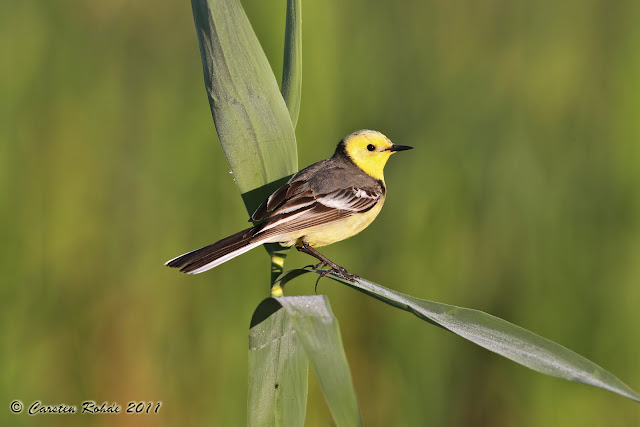This post gives interesting information about future ring readings in Germany and Israel since summer/ autumn 2011.
Counter for 208 banded 1. cy German Black Storks 2011 -
recoveries 1. cy BS after fledging;
updated 23.10.2011: n= 33 (different Ind.)
- the first recovery in Spain on 07.09.11 (T272)
- the second recovery in Spain on 12.09.11 (T292)
- the third recovery in Spain on 21.10.11 (T317)
Counter for 208 banded 1. cy German Black Storks 2011 -
recoveries 1. cy BS after fledging;
updated 23.10.2011: n= 33 (different Ind.)
- the first recovery in Spain on 07.09.11 (T272)
- the second recovery in Spain on 12.09.11 (T292)
- the third recovery in Spain on 21.10.11 (T317)
The first great recovery in Thuringia in July:
On 27. July 2011 saw Simone Hauptmann (Arnstadt) a really big group of BS (6 ad., 15 juv.) near Ohrdruf (Lake Schwabhausen).
5 of 15 juv. had a colour-ring (CR). Simone could read them all:
 |
Ringing on 10.06.2011 - four chicks "T218-T221" in Saxony-Anhalt - meeting on 27.07.2011 in Thuringia with other neighboring BS, going SW-route - © C. Rohde.
|
 |
| Ringing on 10.06.2011 - three chicks "T215-T217" in Saxony-Anhalt - only 10 km distance to the nest of "T218-T221", going SW-route - © C. Rohde. |
 |
Ringing on 21.06.2011 - four chicks "T306-T309" in Saxony-Anhalt - only 8 and 18 km distances to the nests from "T215-T217" and "T218-T221". A really important recovery for the SW-flyway of BS population in Saxony-Anhalt - © C. Rohde.
The second recovery is, unfortunately, victims of electrocution. "T173" was born in the Franconian Forest (Bavaria) and ringing on 20.06.2010 together with three other siblings.
401 days after the ringing found Oliver Paul the BS "T173" under the power lines near Sinzendorf (Bavaria). It was a typical mark of electrocution. The proof was around 160 km SE from the birthplace (see Google Earth image below). The BS was in the meantime already in the second calendar year! Again a tragic case.
|
 |
 |
| Typical breeding sites in the Franconian Forest. In the spruce forest is located the nest. Look closely at the picture, then you can find the nest ..., 20.06.2010 - © C. Rohde. |
 |
"T173" is located right on the nest ground, only "T172" shows photogenic.... 20.06.2010 - © C. Rohde.
The next overview shows the settling behavior of the BS "TL8". I have him on 17.06.2008 ringed in Thuringia (4 chicks). Four years later, the bird has meanwhile sexually mature, it is observed from P. PODZEMNY on 09.06.2011 in the Czech Republic on the border with Slovakia and Austria during the breeding season. A breed is very probably in the region. The settlement would located 530 km ESE from the birth place of "TL8". Great recovery of German BS!
|
 |
| The next proof for western flyway from Brandenburg (near Poland), "T335" flew 791 km SW. |
 |
| Overview about the 1. cy BS 2011 with "Migration trend sector" from North West to South (n=18; by 18. August 2011) |
 |
Overview of siblings "T304" & "T305" born in Thuringia with slight different recoveries in France but with direction to SW.
|
 |
| Crazy tour of siblings "T299", "TT9" and "T9A" from breeding place in Hesse (Rhön) "meeting" around in the Netherlands. |
 |
| The complete "Storklets" "T208-T210" go to East....Perhaps one case for easterly route and I see the nestlings in Israel...or return to West? |
 |
| Route of siblings "T306" and "T309" with nest in Saxony-Anhalt - both go to SW... |
 |
| "T322" from Brandenburg flying the first 600 km to south and reading 30.07.11 near "Kochel am See" (Bavaria), the same direction goes "T310" the first 476 km from Saxony-Anhalt and reading 06. till 09.08.11 near Gerolsbach (Bavaria). |
 |
| Different routes of siblings from the breeding place in Saxony-Anhalt 2011 - "T221" flying 370 km WNW to the Netherlands (07.08.11) and "T218" & "T219" fly 160 km SW to Thuringia (27.07.11). |
German BS seems indeed regularly to fly the Dutch and Dutch coast on their autumnal migratory route - like "T221" & "T224", note first NW-direction! Then both BS were observed in France with direction SW!
|
 |
| Different routes of siblings from the breeding site in Brandenburg (Prignitz) 2011 - "T320" goes 530 km SW to Rhineland Palatinate and "T322" flying 610 km S to Bavaria. "T322" with the second recovery on 14th August, goes 68 km East. |
 |
The siblings "T9N" & "T9P" from the breeding site in Hesse fly after fledging 295 km to NE inside the Elbe Valley.
But in the meantime great news about "T9N" , he was seen from J. Bernard on 20th August in France with the complete new direction to SW - 717 km in almost 8 days - see Google Earth image below:
|
 | ||
|






















